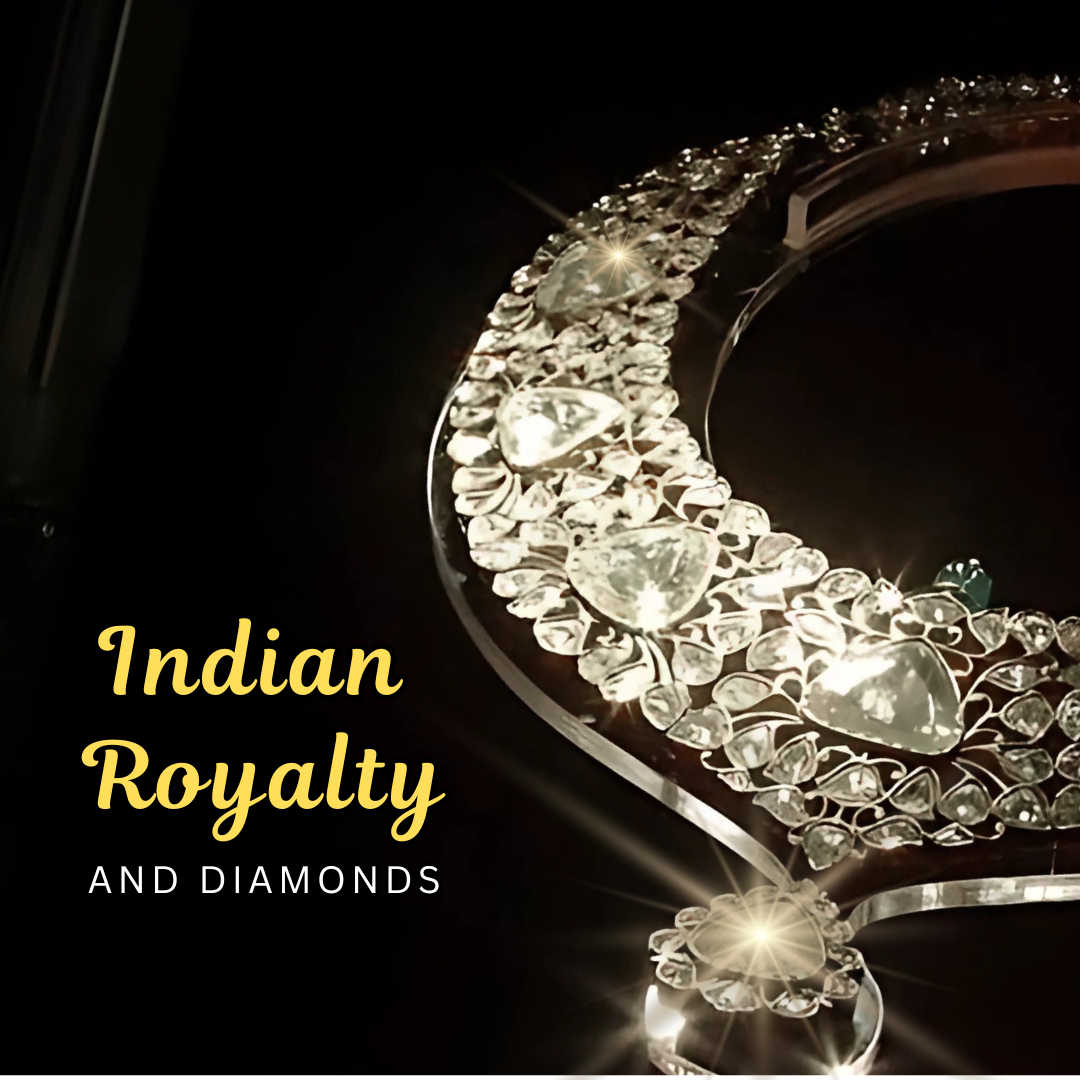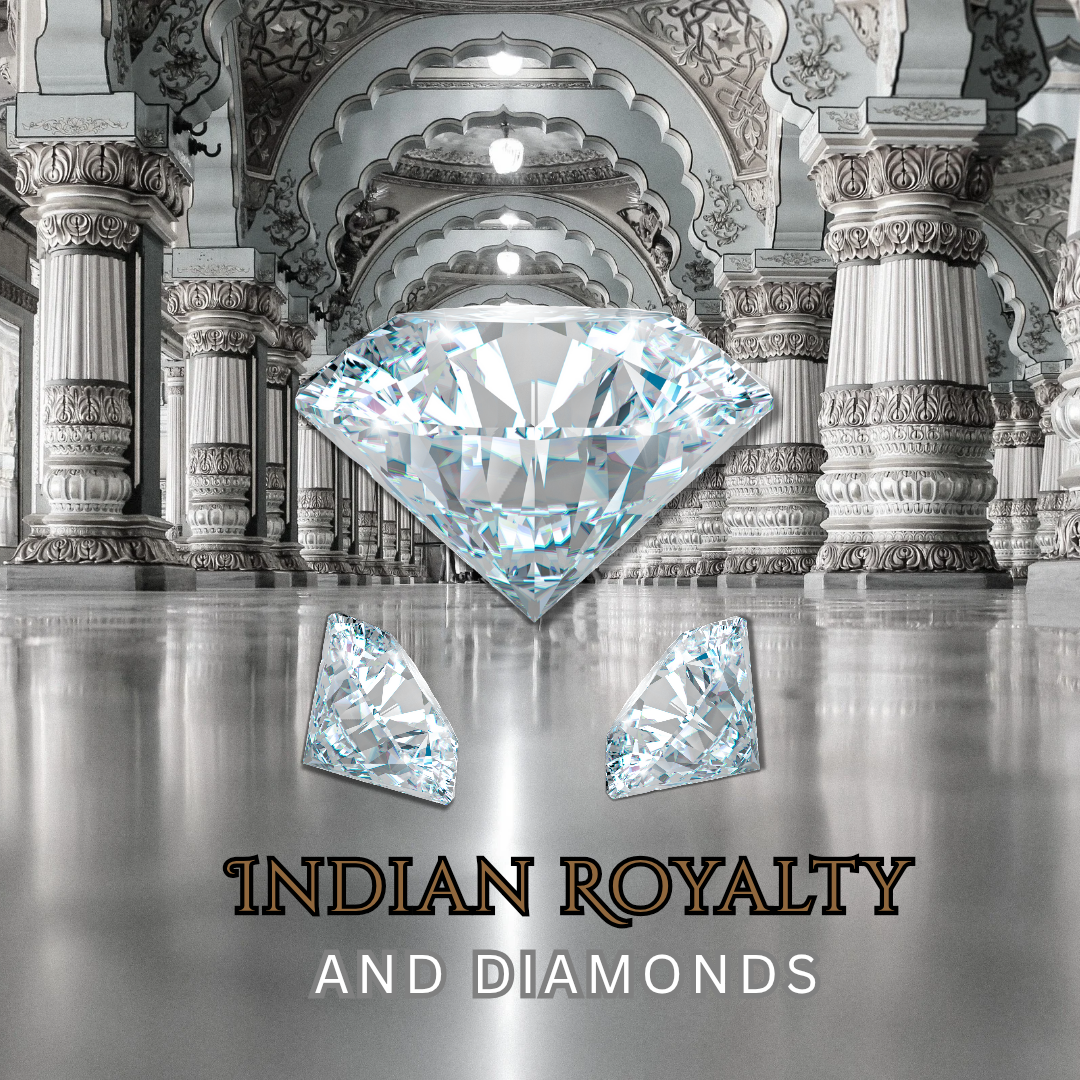Diamonds Everywhere, The Indian Royals
ndian royals had a long and fascinating history with diamonds, considering them to be symbols of power, divinity, and immense wealth. The Nizam dynasty in Hyderabad (India) controlled the Golconda diamond mines during its reign. These were some of the most resourceful mines during that time and a large number of spectacular diamonds that, valued extremely high even today – originated from the Golconda mines.
Indian royals of the past were legendary for their opulent collections of diamonds and precious gemstones. Their immense wealth and access to some of the world’s finest mines—like the famed Golconda diamond mines—meant they could amass treasures that dazzled the world.


Jewelry was not the only way for them to flaunt their diamonds, they even studded their throne, turbans and swords with diamonds and precious stones.
Here’s how Indian royals typically used diamonds:
Crowns and Tiaras: Diamonds adorned royal crowns and tiaras, often combined with other precious gems like emeralds, rubies, and sapphires. The legendary Koh-i-Noor diamond, for instance, was originally part of the Mughal Peacock Throne before being taken by the British.
Necklaces and Pendants: Lavish diamond necklaces, called haar or kanthi, were popular among kings and queens. These pieces often had large, single diamonds as centerpieces or were made with clusters of smaller diamonds. Some of these jewels were so special that, even the royals took them out of their treasure chests only for very special occasions.
Armlets and Bracelets: Armlets (bajuband) and bracelets (kangan) encrusted with diamonds were common, often worn in pairs on both arms. Mughal emperors, in particular, favored heavy, intricately designed armlets with diamonds.
Rings: Enormous diamond rings were worn by both men and women, signifying their status and influence. Signet rings with diamonds engraved were also used as royal seals. Oversized rings with big diamonds, emeralds and rubies worn by Indian royals are preserved in museums in many parts of the world.
Turban Ornaments (Sarpech or Kalgi): Diamonds were embedded in sarpechs (turban ornaments) to enhance the grandeur of royal headgear. A rare blue diamond from the Golconda mines The Seraphim Blue Diamond, was believed to have adorned the turban of the first Nizam (Asaf Jah I) of Hyderabad. Not much is recorded about this diamond as the story goes that, the diamond was ‘paid’ to the French by the second Nizam (Asaf Jah 2) apparently in exchange for military protection. The Timur Ruby and Koh-i-Noor were once part of these elaborate ornaments.
Swords and Daggers: The hilts and scabbards of royal swords and daggers were often decorated with diamonds, symbolizing valor and prestige. Some of these weapons were more ceremonial than practical due to their elaborate gem settings.
Decorative Objects: Thrones, like the famous Peacock Throne, were encrusted with diamonds and other precious stones. Palaces sometimes had decorative artifacts and idols adorned with diamonds.
Diamonds from famous mines like Golconda were prized for their size and quality. Many of these historic diamonds ended up in foreign collections during colonial times, but their legacy in Indian royalty remains iconic and unforgettable.
NOTES
Many of the diamonds owned by Indian royals including the Nizam dynasty of Hyderabad, are shrouded in mystery. Rumors and narrated stories keep hopes and interests high. This as collectors eagerly await rumored historic royal diamonds, to make their debut at highly publicized auctions by giants like Sotheby’s and Christie’s.